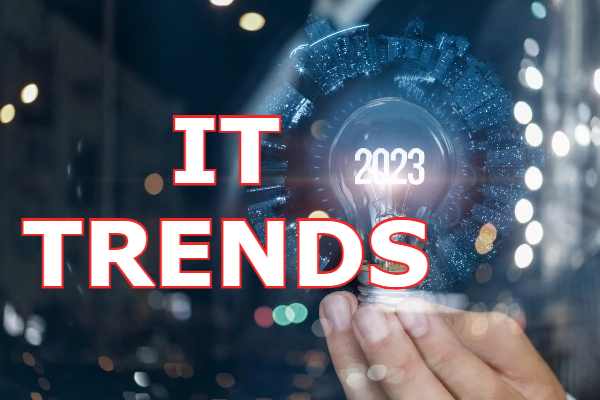Businesses and societies at large continue to turn towards technology to solve some of the world’s greatest challenges. IT operations have majorly evolved over the last three years with C-suite leaders and IT decision-makers prioritising IT transformation for business growth. A positive observation is that businesses in India are moving from the whiteboard to implementation. As digital progress continues to gain momentum against the backdrop of an accelerated rate of digitisation, here are the key 6 IT trends that are expected to transform businesses in 2023.
● 5G to revamp IT infrastructure – The deployment of 5G in India is set to boost IT services. Technologies such as cloud, edge and AI will create a significant impact across industries. Organisations migrating to the cloud to efficiently manage workloads will require advanced enterprise IT solutions to leverage new and emerging technologies. With 5G bringing high-speed networks to process data faster, businesses are now presented with the opportunity to modernise infrastructure and experience enhanced performance complementing tech advancements such as IoT, AR/VR, experiential platforms, etc.
● Increased demand for Edge, AI & IoT – 5G network’s speed is about 10 times faster than 4G. This will increase real-time data processing making Edge computing a more viable option for businesses seeking faster time to insights. Take the manufacturing sector, for instance, 5G & Edge have a significant potential to power ‘Smart Factories‘. Combined with AI, Edge will enable autonomy in smart manufacturing processes, enabling IoT-equipped machinery to recognise malfunctions and transmit that signal in time.
● Rise in adoption of Zero Trust – In an era of hybrid work and rapid digital transformation, traditional perimeter security will not protect organisations against cybercriminals who are innovative in their approach to target vulnerable organisations. With cybercrime expected to cost the world approximately $8 trillion in 2023, protecting remote environments is crucial. This is where a Zero-Trust model will gain more prominence – eliminate attack surfaces, prevent lateral movements and reduce complexities. It also equips businesses with AI-powered threat detection and advanced data protection controls, improving IT and security at the core. The rise in a security-first mindset will enable businesses to adopt a Zero Trust architecture that minimizes privilege and access, and eliminates inadequacies of traditional perimeter security methods while securing modern cloud environments.
● Businesses will benefit from as-a-Service: ITDMs are constantly on the lookout for avenues to reduce infrastructure complexities and gain ultimate flexibility. With as-a-Service gaining more prominence in 2023, businesses leverage the flexibility & scalability they need to stay competitive and manage their CapEx & OpEx. For instance, during busy periods, e-commerce businesses can face downtime when managing maximum traffic. Through a pay-as-you-go model businesses can easily scale up or down to manage dynamic traffic workloads during festive or large discounted sale periods
● Sustainable Computing: IT infrastructure energy requirements can drive up costs and simultaneously contribute to carbon emissions. Data centre emissions account for as many emissions as from the global airline industry. Businesses are already leveraging innovative cooling technologies that prevent energy utilisation. Data centre cooling technologies such as warm-water cooling, and air-assisted liquid cooling have emerged as popular methods of reducing energy consumption.
● GPUs will gain more prominence: GPUs are expanding from being used just for gaming to accelerating different computing workloads, maximising performance for graphic design, virtualisation, AI & HPC. Equipped with deep learning and super samples GPUs can learn on their own and start eliminating bottlenecks. As HPC continues to gain prominence to manage intensive workloads, GPUs will play a crucial role in scientific computing. For instance, researchers are leveraging GPUs for visualisation in HPC workloads by parallelising parts of the code that are compute-intensive. This enables researchers, scientists, and engineers across scientific domains to virtualise big data and run simulations in a fraction of the time to make discoveries faster.
As per NASSCOM estimates, the Indian technology sector crossed $200 billion in FY2022. This acceleration is fueled by businesses prioritising streamlined operations, better speed to market, and seamless digital experiences for customers. ITDMs are adopting different technologies to improve overall efficiency and deliver value in today’s hybrid environment, and this trend will further accelerate in 2023.
(This article is written by Amit Luthra, MD – India, Lenovo ISG).

